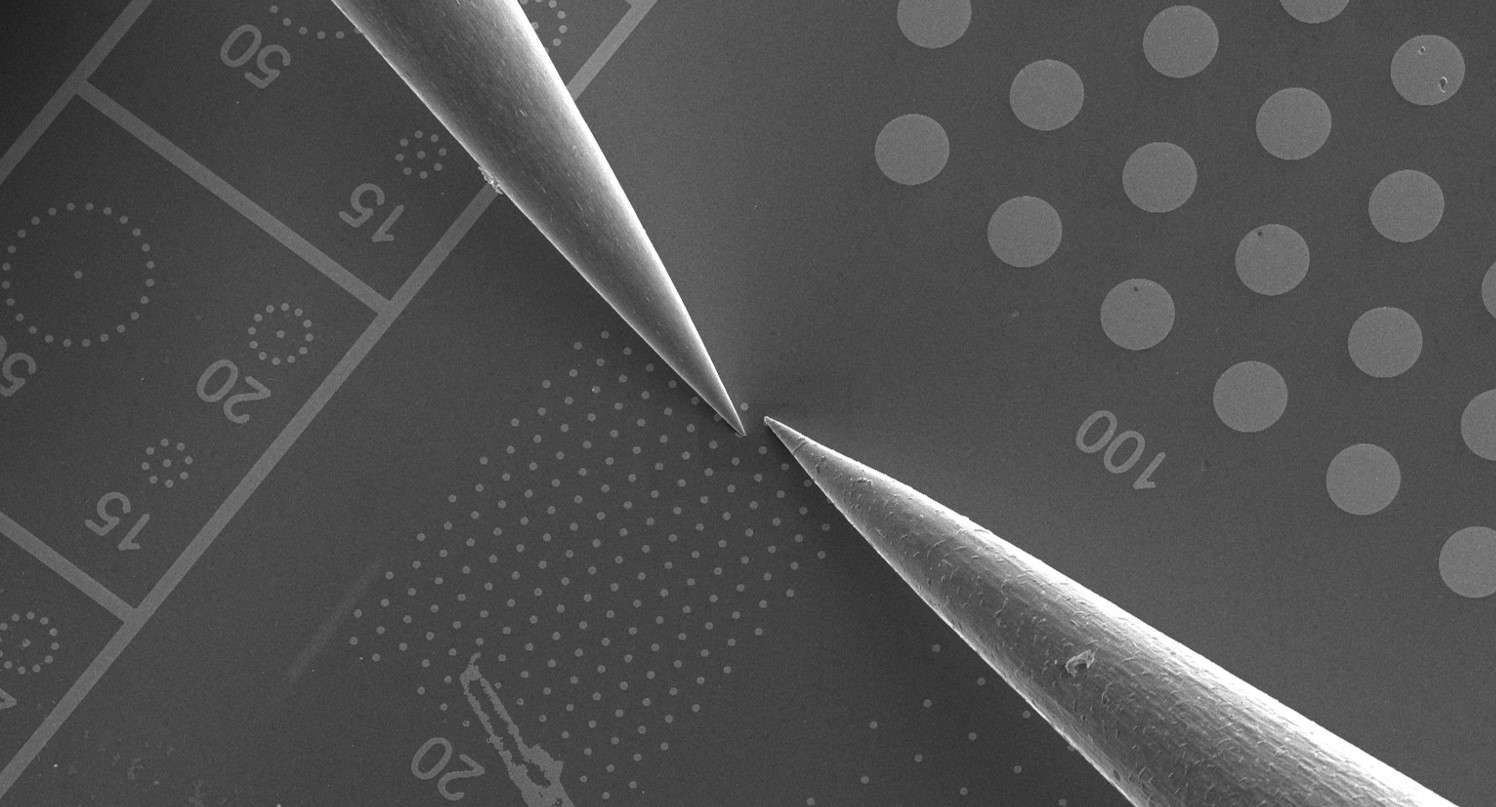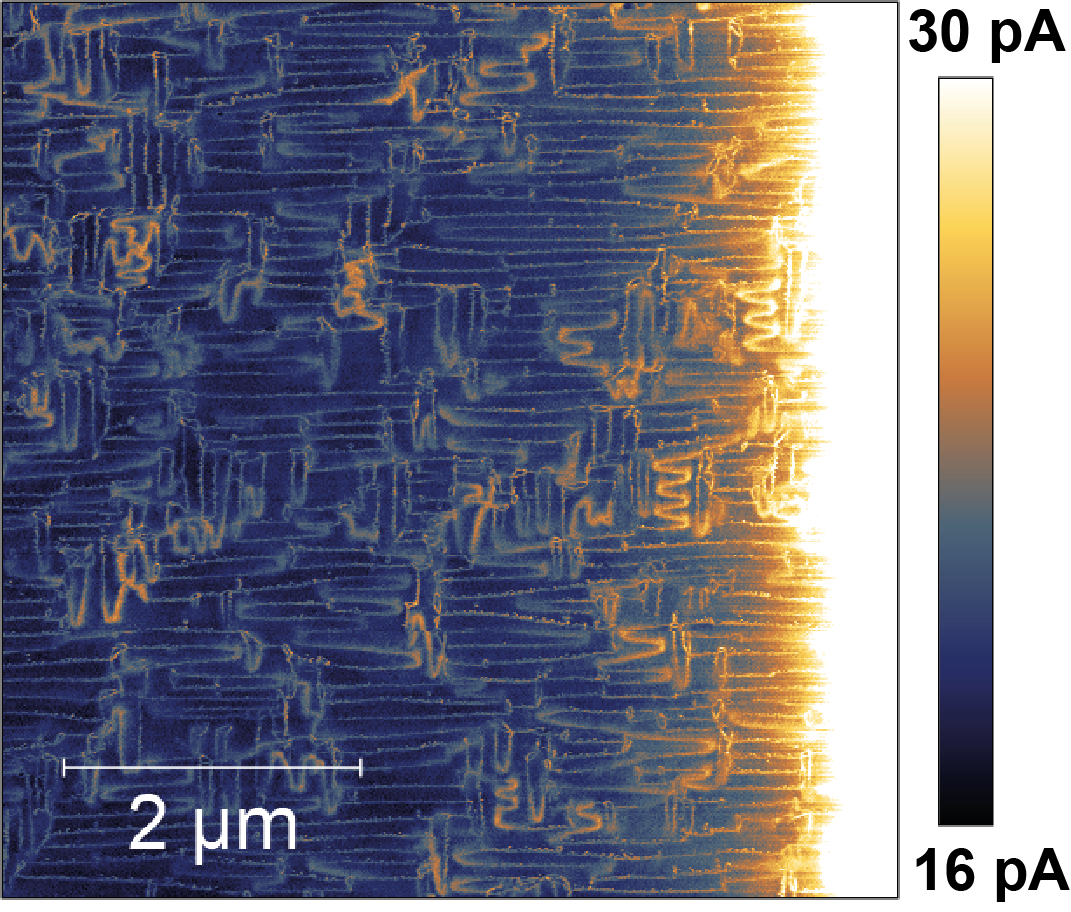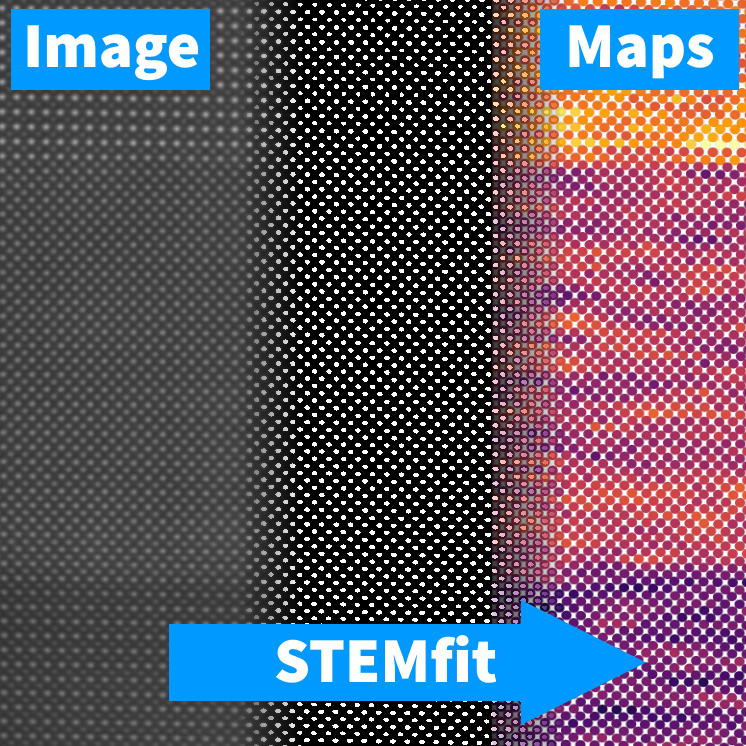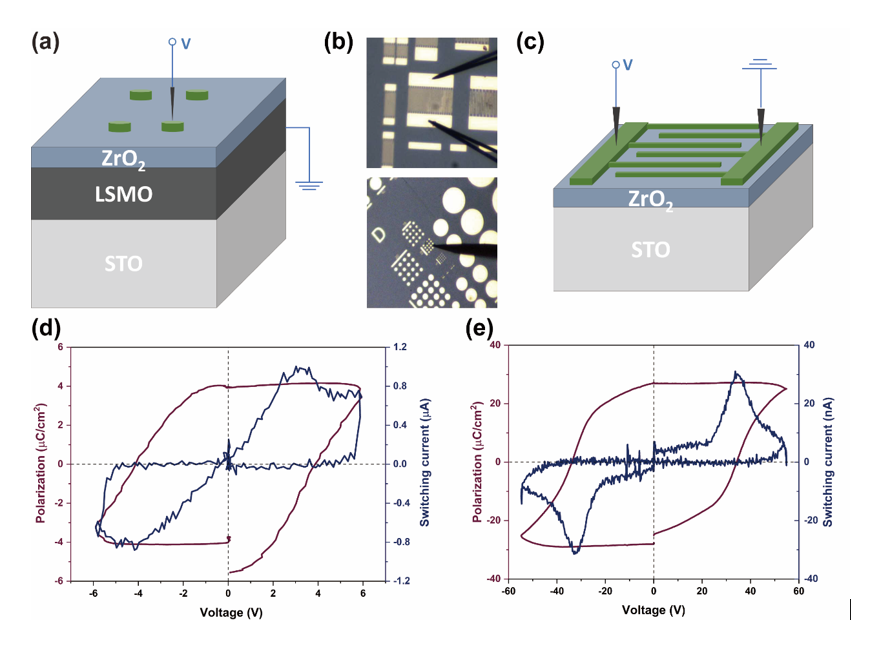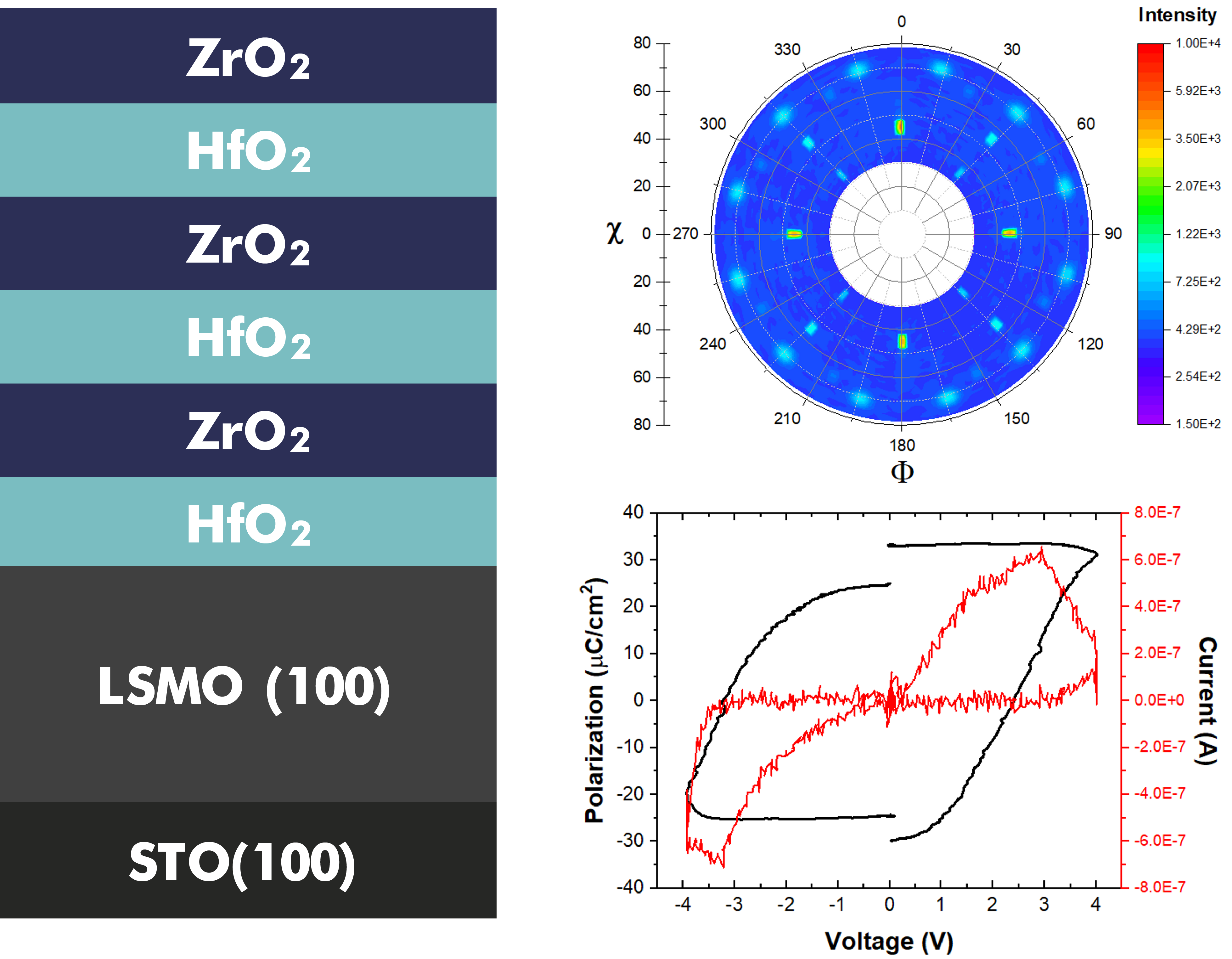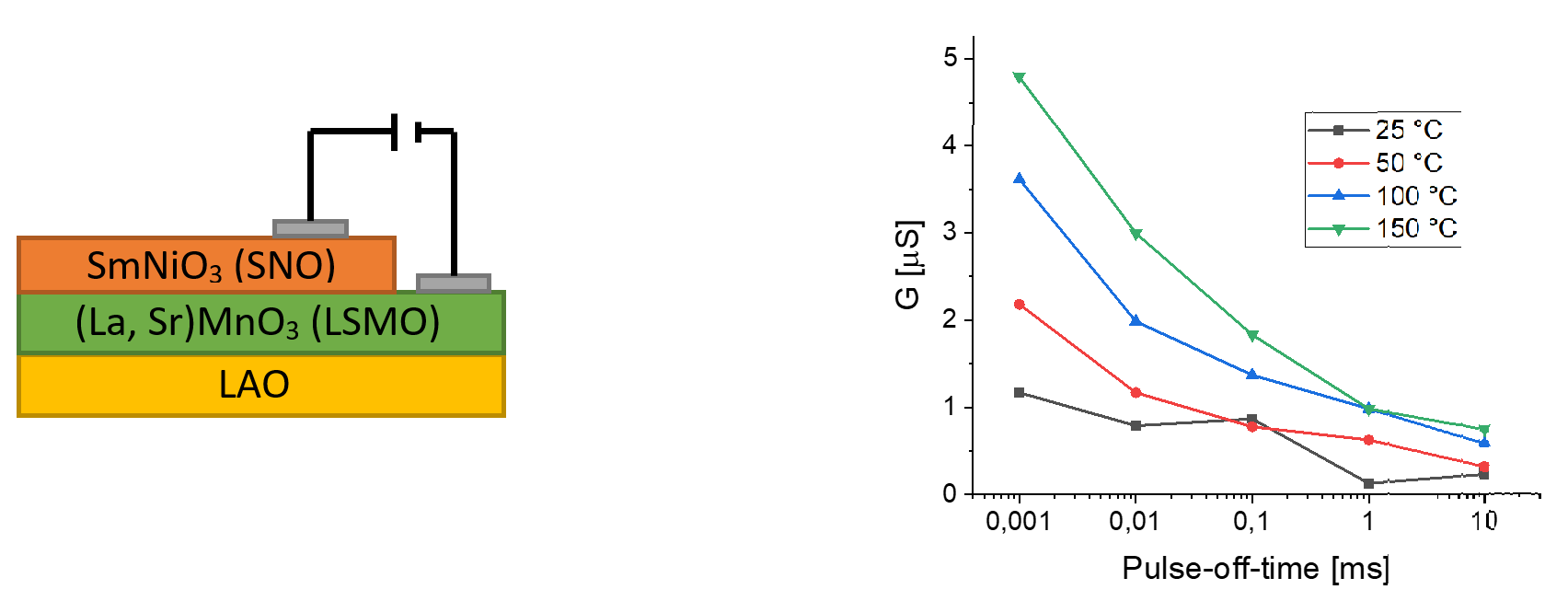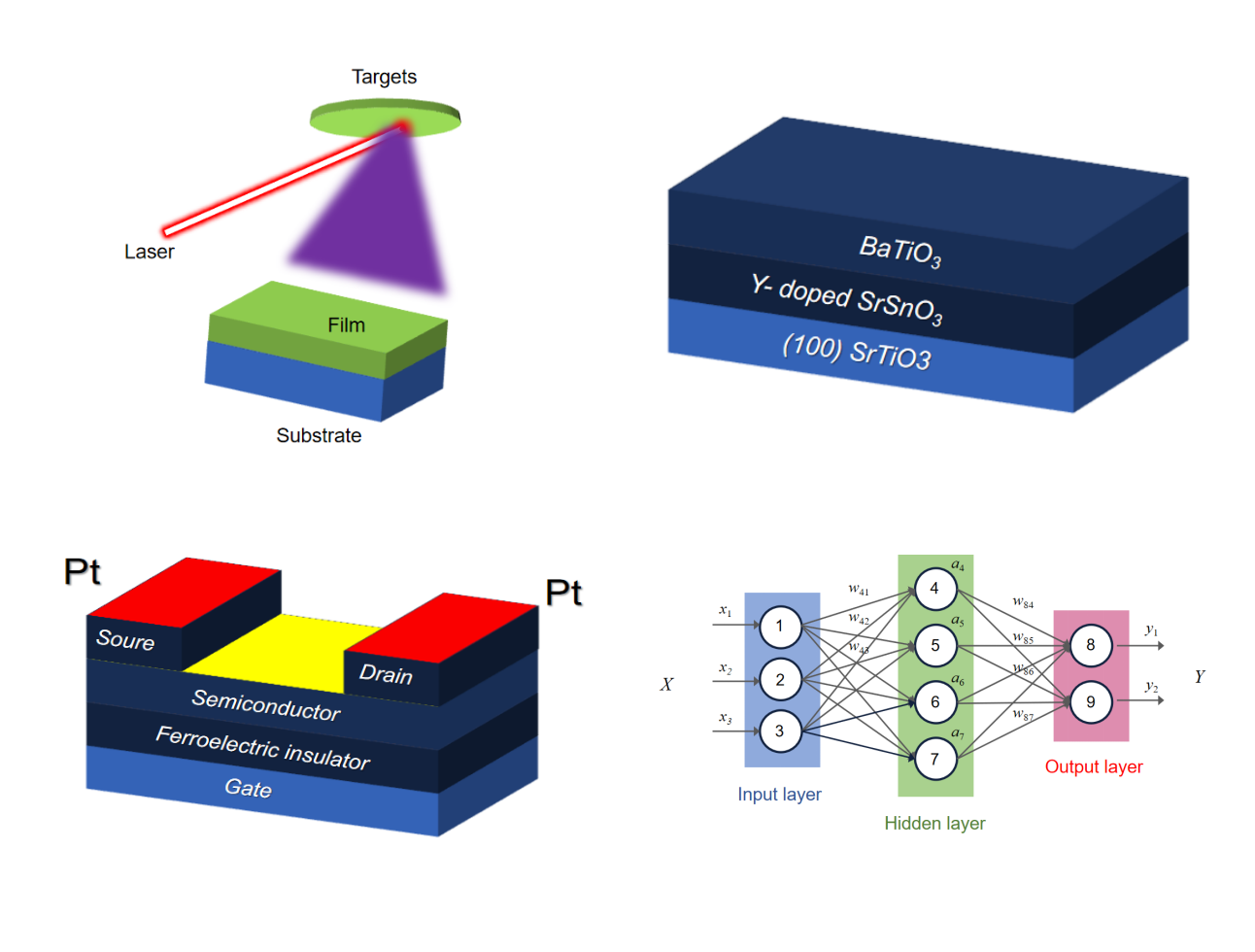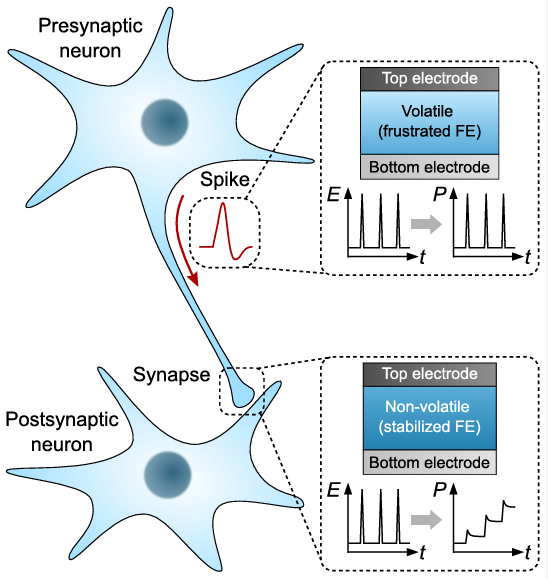Mart Salverda (m.salverda@rug.nl)
Developing materials that can lead to compact versions of artificial neurons (neuristors) and synapses (memristors) is the main aspiration of the nascent neuromorphic materials research field. Oscillating circuits are interesting as neuristors, as they emulate the firing of action potentials. Here we present room-temperature self-oscillating devices fabricated from epitaxial thin films of semiconducting TbMnO3. We show that the negative differential resistance regime observed in these devices, orginates from transitions across the electronic band gap of the semiconductor. The intrinsic nature of the mechanism governing the oscillations gives rise to a high degree of control and repeatability. Obtaining such properties in an epitaxial perovskite oxide opens the way towards combining self-oscillating properties with those of other piezoelectric, ferroelectric, or magnetic perovskite oxides in order to achieve hybrid neuristor-memristor functionality in compact heterostructures.
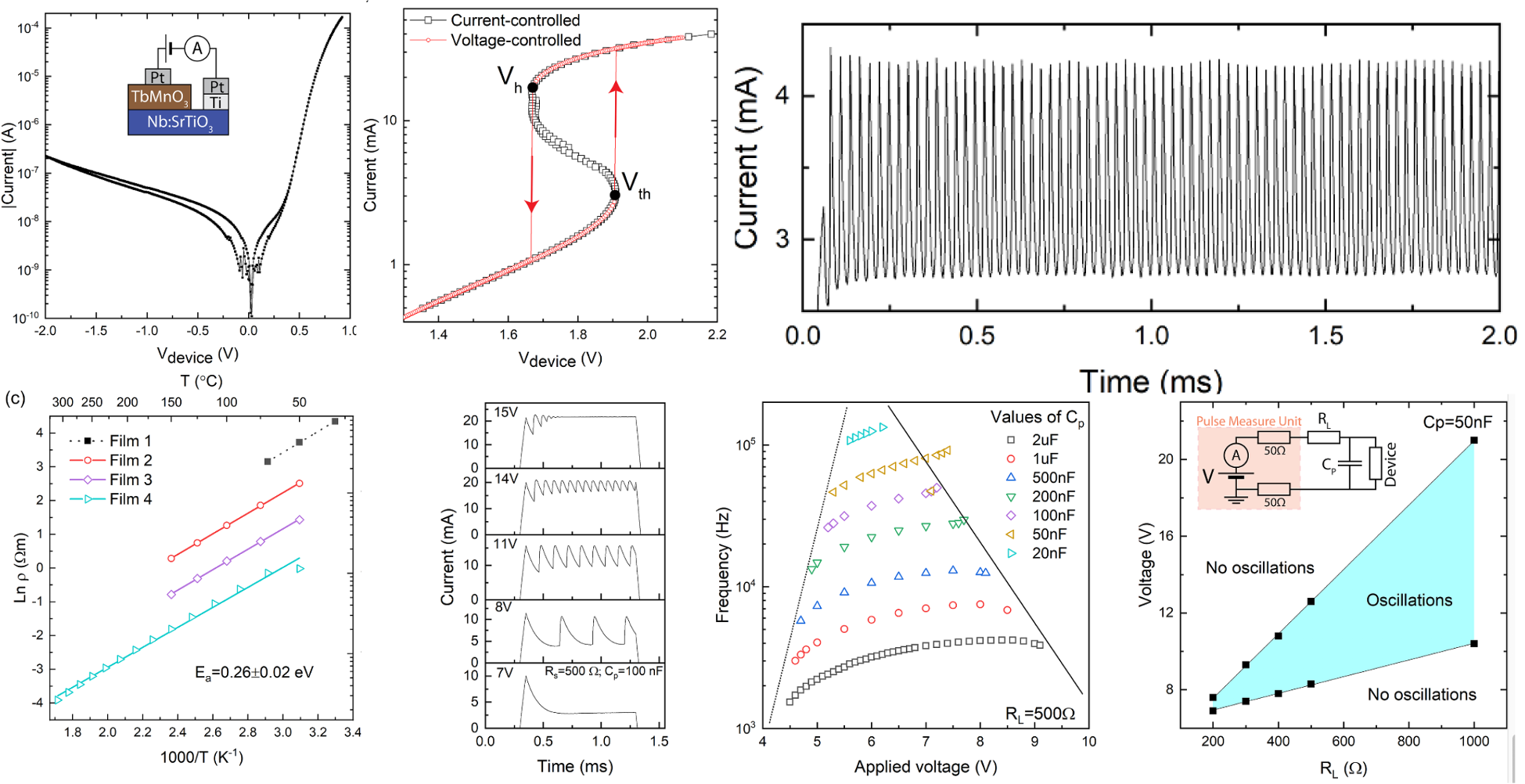
Figure 1. Various electrical measurements on epitaxial TbMnO3. [1]
